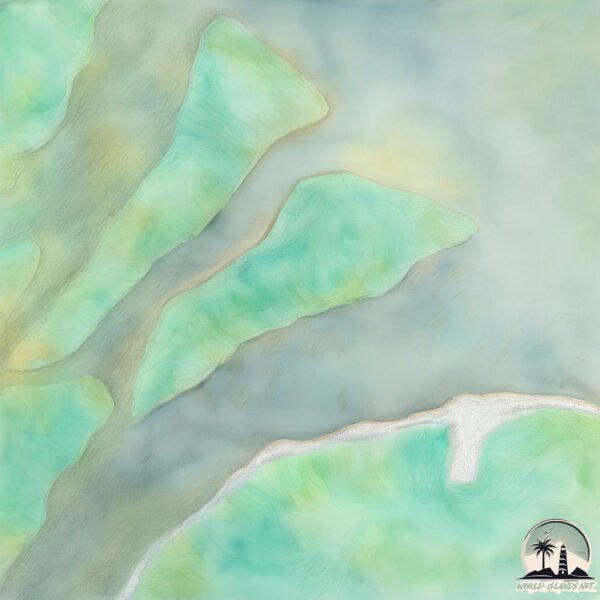Leguan Island

Welcome to Leguan Island, a Tropical island in the North Atlantic Ocean, part of the majestic Atlantic Ocean. This guide offers a comprehensive overview of what makes Leguan Island unique – from its geography and climate to its population, infrastructure, and beyond. Dive into the details:
- Geography and Size: Explore the island’s size and location.
- Climate and Weather: Weather patterns and temperature.
- Topography and Nature: Uncover the natural wonders of the island.
- Infrastructure and Travelling: Insights on reaching, staying, and making the most of your visit.
- News and Headlines: Latest News.
Geography and size of Leguan Island
Size: 51.4 km²
Coastline: 38.2 km
Ocean: Atlantic Ocean
Sea: North Atlantic Ocean
Continent: South America
Leguan Island is a Medium Island spanning 51 km² with a coastline of 38 km.
Archipel: –
Tectonic Plate: Antarctica – Covers the Antarctic continent and extends outward, characterized by interactions with surrounding oceanic plates and known for its seismic activity along the periphery.
The geographic heart of the island is pinpointed at these coordinates:
Latitude: 6.92653064 / Longitude: -58.41376352
Climate and weather of Leguan Island
Climate Zone: Tropical
Climate Details: Tropical Rainforest Climate
Temperature: Hot
Climate Characteristics: This climate is typified by heavy rainfall throughout the year, high humidity, and consistently high temperatures, leading to lush rainforests and rich biodiversity. Seasonal temperature variations are minimal.
Topography and nature of Leguan Island
Timezone: UTC-04:00
Timezone places: America/La_Paz
Max. Elevation: 16 m
Mean Elevation: 2 m
Vegetation: Rice Paddy
Tree Coverage: 33%
The mean elevation is 2 m. The highest elevation on the island reaches approximately 16 meters above sea level. The island is characterized by Plains: Flat, low-lying lands characterized by a maximum elevation of up to 200 meters. On islands, plains are typically coastal lowlands or central flat areas.
Dominating Vegetation: Rice Paddy
Specifically designed for rice cultivation, these fields are flooded with water during the growing season. Paddy fields are a common sight in many parts of Asia. Leguan Island has a tree cover of 33 %.
Vegetation: 10 vegetation zones – Very Highly Diverse Island
Islands in this range are ecological powerhouses, showcasing a wide array of vegetation zones. Each zone, from lush rainforests to arid scrublands, coastal mangroves to mountainous regions, contributes to a complex and interdependent ecosystem. These islands are often hotspots of biodiversity, supporting numerous species and intricate ecological processes.
Infrastructure and Travelling to Leguan Island
Does the island have a public airport? no.
There is no public and scheduled airport on Leguan Island. The nearest airport is Eugene F. Correira International Airport, located 31 km away.
Does the island have a major port? no.
There are no major ports on Leguan Island. The closest major port is GEORGETOWN, approximately 24 km away.
The mean population of Leguan Island is 82 per km². Leguan Island is Gently Populated. The island belongs to Guyana.
Continuing your journey, Wakenaam Island is the next notable island, situated merely km away.
LEGUAN ISLAND DANCE FACE-OFF...CHARITY-SUPERNAM.



Guyana is classified as Developing region: Regions characterized by lower income levels, with economies in the process of industrialization and modernization. The level of income is Lower middle income.
News – Latest Updates and Headlines from Leguan Island
Stay informed with the most recent news and important headlines from Leguan Island. Here’s a roundup of the latest developments.
Please note: The data used here has been primarily extracted from satellite readings. Deviations from exact values may occur, particularly regarding the height of elevations and population density. Land area and coastline measurements refer to average values at mean high tide.
